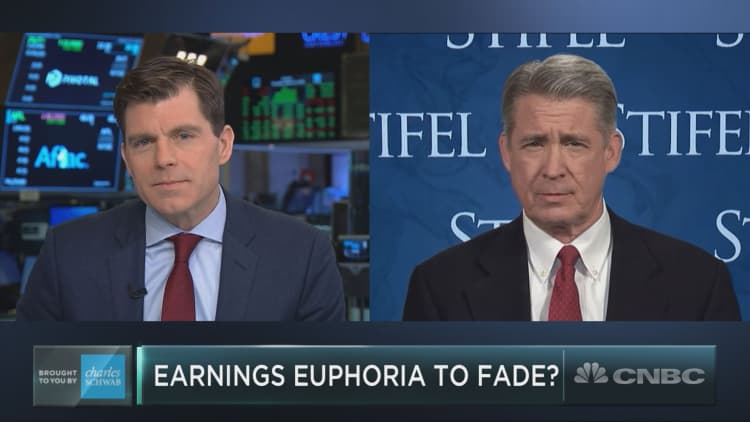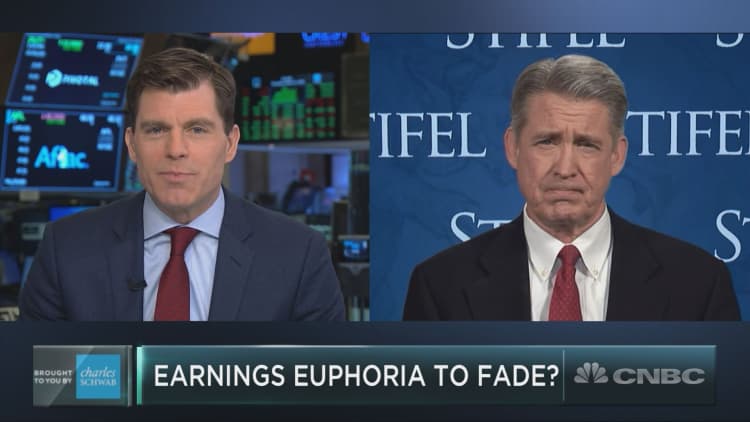
Earnings season just crossed the halfway mark and stocks are surging.
Better-than-expected quarters from names such as Boeing, Apple, AMD and Facebook pushed the to close its best January in 32 years.
This could be as good as it gets for the market before things turn south, says Barry Bannister, head of U.S. equity strategy at Stifel.
"The problem is the price-to-earnings multiple is about right," Bannister said on CNBC's "Trading Nation" on Thursday. "The earnings growth is not that much this year, so the market is fairly valued and that's the trouble for upside here."
The S&P 500 should pull in $165 in earnings per share this year, says Bannister, lower than the nearly $170 estimate compiled by FactSet. Bannister's estimate implies 3 percent earnings growth, half the growth the Street expects.
"The difficult dollar comparisons [and] weak global growth have really weighed on the growth this year, and if earnings growth this year were only 5 percent, the price-to-earnings multiple should be around 16, 17 times. There's not a lot of upside at this point," said Bannister.
Based on his earnings estimate and expected valuation, Bannister says an end-of-year target of 2,725 for the S&P 500 sounds realistic. The index is less than 1 percent from that level.
Bannister says one of the biggest risks to this stock market rally is the Federal Reserve and the possibility it pushes the yield curve to invert through its tightening policy. In that event, so-called bond proxy stocks that offer high dividend yields could offer shelter.
"Some of the staples, most of the utilities, do look like a good defensive trade if the Fed has indeed over-tightened," said Bannister.
However, in some cases, it's what you keep out of your portfolio that matters.
"If the yield curve does invert … then the industrials and the cyclicals and the materials that I mentioned are going to be under pressure," he added. "It's kind of what you avoid not so much as what you own if there is going to be a slowdown that really blows back on the U.S."
The yield curve inverts when a shorter-term bond yields higher than a longer-term bond. The Fed's tightening actions typically effect the shorter-end of the curve. The Fed left rates unchanged at its January meeting on Wednesday and said it would be "patient" with future hikes. The central bank next meets in March.






